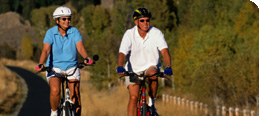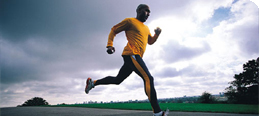It is estimated that over 340 million people in the world suffer from depression. Half of all victims do not recognize the illness and therefore never seek help. Untreated, depression is the most common cause of suicide and the incidence is unfortunately, on the rise. The World Health Organization has estimated that by the year 2020 “depression will be the greatest burden of ill-health to people in the developing world, and severe depression will be the second largest cause of death and disability”.
What differentiates someone who is sad from someone who is considered clinically depressed? Since the term is over simplified and often misused, the true diagnosis should be left to the medical profession. However, psychologists will generally search for symptoms involving feelings or signs such as the following:
- Depressed mood most of the day
- Fatigue or loss of energy
- Feelings of worthlessness
- Decreased ability to think or concentrate
- Loss of pleasure in all or most activities
- Weight loss or weight gain without conscious efforts
Causes of Depression?
Depression has been shown to run in families suggesting a possible genetic connection. It is more common in women, and may become more visible in those with certain personality traits such as pessimism. Environment, lifestyle and stressful events may also play a role in depression as well as certain brain chemicals. It is actually the brain chemicals which have sparked the interest of many researchers including those involved in exercise studies. To date, researchers have been searching for a link between exercise and a possible cause/treatment of depression through the study of various neurotransmitters in the brain. Two of interest and which relate to exercise are Serotonin and Norepinephrine. Some research currently demonstrates that these two chemicals are lower in depressed patients and exercise is believed to be an effective method of naturally increasing them, therefore current studies are attempting to determine if a true link exists involving exercise as a potential natural treatment in depressed patients.
The primary function of serotonin is regulation of our emotions and it has been suggested that low levels may cause large mood swings and more impulsive behavior. Norepinephrine on the other hand helps us interpret and act on emotions and combined with other regions of the brain, controls physical desires such as sleep, appetite and reaction to stress. According to the American Medical Association, heavy exercise may increase serotonin levels and these levels may last up to one hour after the workout.
It has also been suggested that prolonged exercise increases brain serotonergic activity. With respect to norepinephrine, it is a fact that this chemical is released with exercise, and data exists suggesting that both acute and chronic exercise bouts may play a role in the regulation of the deficient chemicals.
While there is a clear possibility that a link exists between serotonin, norepinephrine, depression and exercise, further research is needed.
Can exercise increase mood and help with those mildly depressed? The answer to this is clearly yes.
Whether you follow an exercise program or simply take part in some form of random activity, exercise without a doubt, increases your energy levels and improves your attitude and your ability to focus. Exercise may promote social behavior, acceptance and fight boredom, and of course helps regulate weight and body image—improving appearance, self confidence and creating an overall feeling of well-being.
Exercise for Bone Health
Maintaining good bone density is very important at any age, but it is especially important after age 50. Both men and women can get osteoporosis, but it is much more common in women because of declining estrogen levels before and after menopause. When bone density is low, a simple fall can result in fractures of the hip, back or wrist. The good news is you can maintain—and even improve—bone density with impact loading exercise for your hips, spine and arms.
Impact Loading Exercise for your Hips and Spine
There are many forms of aerobic exercise that place weight on your hips and spine, the most convenient being walking, either outdoors or using a treadmill. Other forms of impact loading aerobic exercise are aerobics classes (including step and Tae Bo), hiking, rollerblading, cross country skiing and snowshoeing.
Aim to incorporate weight bearing exercises into at least three of your aerobic workouts each week. You can even mix and match activities if you wish. For example, walk for 30 to 40 minutes and then do 20 minutes on a stationary bike
Impact Loading for your Arms
You can load your arms in a number of ways. A complete upper body weight lifting routine, including biceps curls, rows and triceps extensions, will load your arms. If you are not currently doing a regular upper body routine, complete the Truestar Exercise profile now to receive a personalized exercise program. I also suggest doing at least two of the following exercises three times per week. Try doing two sets of 12 to 15 repetitions for each.
1. The standing squat with a biceps curl: Choose a weight that allows you to complete 15 repetitions. Hold a dumbbell in each hand with your elbows flexed. Stand upright and lower the weights from shoulder height while at the same time doing a partial squat. As you rise from your squat, bring the weights back to the starting position.
2. Standing squat with an arm assist: You can either use a dip machine at your health club, or you can make your own dip machine using two chairs of equal height. Choose chairs that are sturdy and have substantial backs so they will keep their shape and support you well. Position the two chairs with the backs facing each other, leaving room for you to fit in the middle. Partially support your weight with your arms as you go into a partial squat. Push up with your arms as well as your legs. Use caution performing this exercise if you have a shoulder problem. . Wall or knee push-ups: You can do a push-up while standing near a wall. The farther your feet are from the wall, the more you can load your arms with this push-up. You can also do a push-up while kneeling. If you have a shoulder problem, position your body and your arms so this does not hurt your shoulders.
Decreasing Your Risk of Falling
To decrease your risk of falling, consider a few factors: footwear, orthotic supports, exercise and walking surface.
Your footwear should be stable and supportive and not so flexible that it lacks stability. Wearing more stable shoes is important for any impact loading exercise or athletic endeavor.
Orthotics are supports that fit inside your shoes. These may be helpful if you have flattened arches or high arches. You can get advice from your health care provider regarding stable shoes and orthotics.
Walking surface is an issue everywhere, but especially if you live in a colder climate. It is important to wear shoes or shoe coverings that are good for snow and ice if you are exercising or walking in such conditions.
Exercises such as lunges can help improve your functional muscle strength and may decrease your risk of falling. Lunges have the advantage of improving your strength and balance at the same time and are an important part of most exercise programs. Refer to your Truestar Exercise Plan for proper lunge technique.
It can be helpful to progress through different levels of a lunge, from a stationary alternating leg lunge to a walking lunge to lunges with hand weights. It is important to first master the basic lunge technique. If you have knee pain, you can make the lunge more comfortable by supporting yourself with your arms using ski poles or by holding onto two chair backs.
Try incorporating impact loaded aerobic exercise, lunges and arm loading exercises into your regular exercise program to maintain, and improve, your bone density and your functional strength.

Keep posting stuff like this i really like it